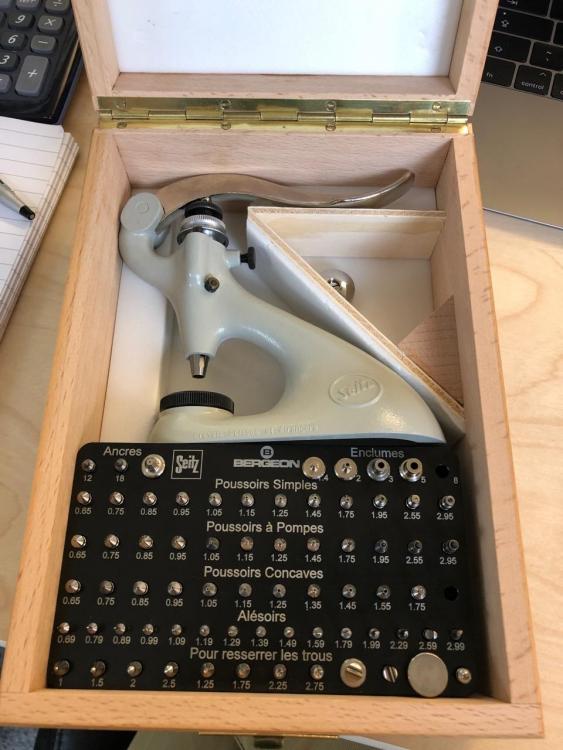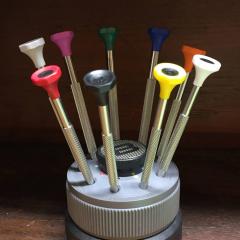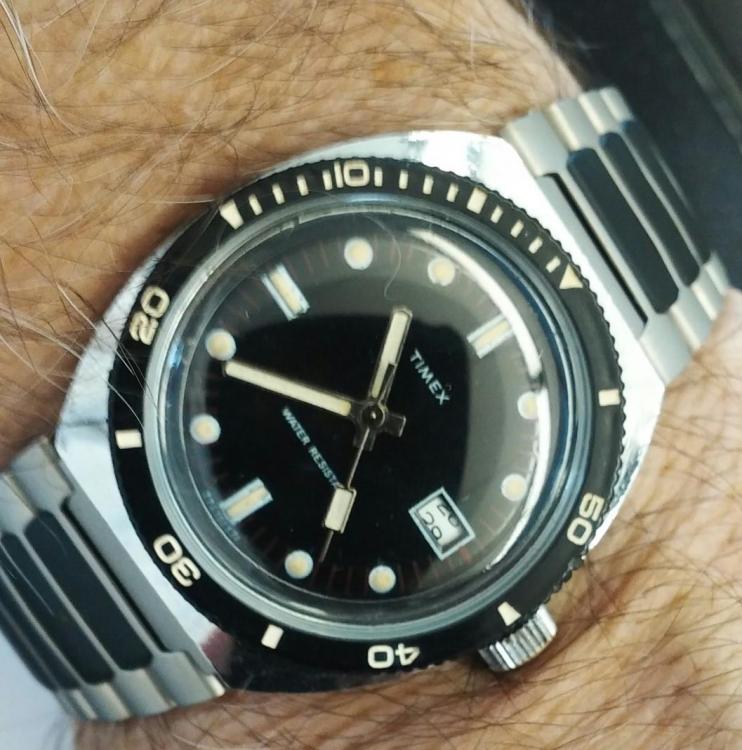Leaderboard
Popular Content
Showing content with the highest reputation on 09/24/18 in all areas
-
As I get older, seeing has become a problem. Here are the methods I have used to allow me to keep working... http://jamesriser.com/Machinery/Magnifying.pdf This may be of interest to others. Jim2 points
-
I'm trying to make sure I understand the actual question? I assume what you're suggesting is 20 years ago a brand-new watch was purchased and 20 years later it's now seems to be defective or it's having an issue or it's no longer working like it did 20 years ago? Then I'm assuming between now and 20 years ago it's never been worked on are serviced it's one of those twenty-year watches? This kind a discussion comes up quite a bit in the watch collectors groups. The very proud individual that has his fathers watch it's never been serviced they never paid those greedy watchmakers who charge way to much money for servicing their watch and it's still running great. then there's a lot of variables here like was the watch run every single day or only occasionally? The environment like do you like to take your watch into the shower with you that seems you're really popular thing to do with watches. is it on an auto winder every single day so it's ready to go. it also depends on who made the watch and how many jeweled bearings versus non-jeweled bearings. the problem is the watch is a mechanical device it has moving components. The moving components require lubrication to move properly. The lubrication even if it's synthetic may not last forever. Then the environmental problems the watch is in a case with rubber gaskets they don't last forever the rubber gets hard. Moisture gets into the watch even if it's a really really tiny quantities of moisture rust forms rust is a really nice grinding compound. so unfortunately mechanical devices without proper lubrication wear out. Mainspring this may or may not last forever. The old blued steel Springs definitely don't last forever they tend to lose their springiness and just don't work at all anymore. The modern white Springs are supposed to last forever but they don't always. Then there's that pesky lubrication problem if the lubrication should get sticky or gummy or mix with rust that doesn't work very well. Then even if it does last forever it has a habit of spreading with time so there's basically no lubrication or not enough lubrication where it needs to be. Then mainspring lubrication modern mainsprings are self lubricated mostly dry lubricants so other then eventually no longer being where it's supposed to be is not going to get gummy or sticky. But this does depend upon the manufacture Seiko has a non-dry lubricant. But for automatics there is something called breaking grease. It's applied to the barrel wall is a very strange grease. The breaking part is it holds the spring in place until almost the end where the spring breaks free and then it's a lubricant. When this disintegrates in a variety of ways the mainspring may not hold and it will slip prematurely. Or I've seen pictures of brass filings it's no longer lubricating at all whether it's holding or not is irrelevant brass filings in the mainspring barrel is not a good thing. Then all of this is speculation until somebody takes the back off a looks at the watch. Unlike an automobile where you can lift up the hood checked to see if you still have a oil because you don't like to get it changed just drive it until it runs out you can't really take the back off and check the oil and see if it's still good after 20 years. So basically somebody has taken apart to see what's going on. So while the watch companies are currently working on watches with longer and longer service intervals by figuring out ways to eliminate lubrication watches made 20 years ago don't fit in that category.2 points
-
A few months ago I spotted what I considered to be, a rather nice looking chronograph watch for sale. On the dial, the name was, Ravisa. Inside, the movement was a Harley Ronda 726. I bought it as non working and soon got busy, stripping it down. There was no strap fitted, but that didn't matter for now............one thing at a time. This watch incorporates two coils and, when checked, one of them proved to be open circuit. With the use of a stereo microscope, I was able to see the breaks. Yes, breaks.............both of them! Somehow, both ends had both become disconnected. Using my soldering iron, I was able to pick up the ends and successfully reconnect them........which my ohm-meter confirmed. After that, it was cleaned and reassemble/oiled. Once done, the battery was fitted and let's see what we have. Unfortunately, the chronograph section didn't work, but the watch did. At first, this wasn't apparent because the coil pulses for the watch section are spaced about ten seconds apart. After thinking carefully, I could only think of one thing being responsible for the chronograph section not working...............the circuit. Now, for some curious reason, I never checked the circuit when the watch was stripped and I had the chance to. Whenever I strip a quartz watch down, I always check the circuit to make sure that it is working. Why, then, didn't I do so with this one? (Murphy's law!) Well, it's my own fault and now I had to strip it down again to get at the circuit which, in this watch, is buried a few layers down and takes quite a bit of getting at. I got the circuit out and checked it for pulses. Yes, one section was 'pulsing' (The watch section) but the chronograph section was emitting nothing, apart from a high pitched whine. Damn! After a long search, I found a firm in San Francisco ( S.T. Supply) that had the the circuit and got busy ordering it. It took about three weeks to arrive and, once it did, I eagerly fitted it to the watch. It's a tricky business assembling this watch, but it got done. Right, I fitted the battery again and this time the chronograph section sprang to life................success! Everything was working, so I left it to 'soak test' for a while. A couple of days passed by and the watch was working fine. I saw a really nice, shiny S/S bracelet with black ceramic sections and immediately thought how nice that would compliment the black bezel on the watch. The only problem was that the watch measured 19mm across the lugs and the strap was 20mm across. I couldn't find the same bracelet with 19mm and I just had to have that bracelet. A long story cut short, I very carefully altered the watch case and the bracelet and, voila, job done. With its new glass and shiny bracelet, the watch looks absolutely smashing. I just love this watch and I intend to keep it. I wear it daily now, while giving my mid 1960's Valjoux 72 a well earned rest.1 point
-
1 point
-
Made another video on how to cut away the rivet on an Elgin Balance Staff. Sent from my iPhone using Tapatalk Pro1 point
-
I can think of be several causes for poor power reserve- Inefficiency in the auto winding mechanism (can be caused by a number of things, e.g. wear, contaminants, and dry lubricant). - Mainspring bridle slipping too early during winding (usually a wear or lubrication issue in the mainspring barrel)- Watch stopping before the mainspring is fully unwound (usually caused by particles/ dirt or a defective / worn part). In this case the full power reserve may have built up in the mainspring as it should, but watch stops when it comes to a lower state of wind.1 point
-
1 point
-
some would be very surprised and just how rewarding the return is on vintage Timex!...1 point
-
Yes, Timex did have a nice mix of different hand styles. The one issue that can be a pain is with the second hand only having a center hole and no tube to help hold it in place. Often after a repair the seconds hand tends to not fit so well due to the hole having been elongated during removal. For this I have two fixes, first is to place the hand on flat metal surface and use a flat punch to peen down the area. If this still does not quite get the end result I dab a dot of clear nail polish to the underside and quickly fit it the movement.1 point
-
1 point
-
1 point





